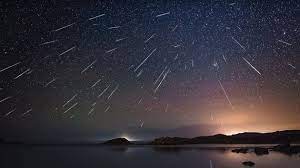Tuesday’s new moon has left a dim sky for one of the year’s most illuminating meteor showers to sparkle across it even more brightly.
The Geminid meteor shower will reach its peak at about 19:00 GMT on Thursday and remain intermittently visible until December 24. Its unique formation sets it apart from the estimated 30 showers that are visible on Earth each year.
What is the Geminid meteor shower?
The Geminid meteor shower is a celestial event that occurs every December and gets its name from the constellation “Gemini”.
It is also one of two annual showers that form when the Earth passes through debris left by asteroids, unlike other meteor showers that are formed by comet debris.
An asteroid is made out of rock while comets are balls of ice and dust. When either of these enter the earth’s atmosphere in large amounts, they burn up creating streaks of light or a “meteor shower”.
An asteroid named 3200 Phaethon was discovered as the source of Geminid meteors in the mid-1980s, while the shower’s first recorded observation occurred in 1862.
What time is the peak and where can you get the best view of the meteor shower?
The event is predicted to peak at 19:27 GMT on December 14 while continuing to be visible through pre-dawn hours.
The best time to watch the shower is between midnight and 2am local time, in any time zone, according to The Planetary Society.
The darkness of late night and the new moon will put the vibrant shower at centre stage, particularly if skies remain clear. Next year’s Geminid shower will occur during the bright rays of a full moon and be less visible.
Where and how can you watch the Geminid meteor shower?
Skywatchers can observe the shower directly or watch a livestream hosted by telescope networks.










